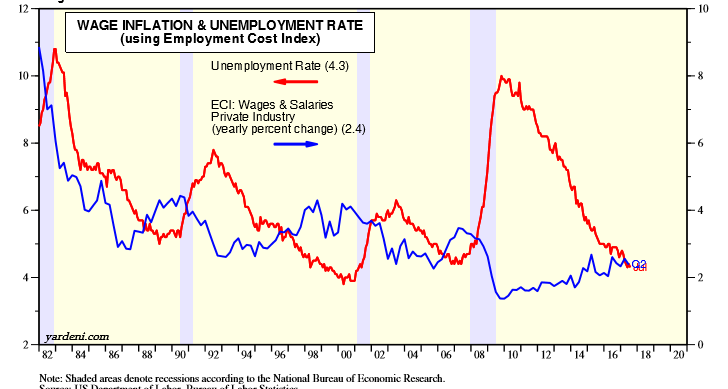It takes a long time for economists to recognize and concede that a theory is no longer valid. This is certainly the case when it comes to understanding the relationship between falling unemployment rates and wage gains—- the Phillips curve made famous by William Phillips in the 1960s. The curve has become a cornerstone of policy making for all central banks, however, it now a major headache as the real world does not seem to conform to the theory.
Phillips identified an inverse relationship between wage gains and unemployment over a one-hundred-year period. As the unemployment rate fell, wages rose to attract workers. The theory then was extended to measuring the relationship between unemployment and inflation—- prices rise when unemployment falls and goes in reverse when prices fall. The data mapped a smooth non- linear curve that is taught to every first-year student in economics.
As Figure 1 demonstrates, this correlation held up very well for decades until around 2010 when the unemployment rate started to fall dramatically without any increase in wage rates.
Figure 1 US Wage and Unemployment, 1982-2016

Those who maintain that the Phillips curve model continues to be valid pointed out it “is just a matter of time” before wages accelerate. We should expect lags in wage gains as they adjust to a tightening employment market. We must be patient. Central banks, on the other hand, must be able to anticipate price movements in the future and they must not be influenced by current muted wage gains. Yellen has made statements that inflation will return to the 2% target rate in “the medium term” in support of the Fed’s position that monetary policy needs to tighten. The Bank of Canada has joined the chorus of bankers who have labeled the recent decline in price gains as “transitory” in its most recent policy decision to raise the bank rate.
Patience is not needed. Instead, we should acknowledge that there are some very fundamental changes in the industrialized economies that render the Phillips curve less effective in setting policy, such as:











Leave A Comment